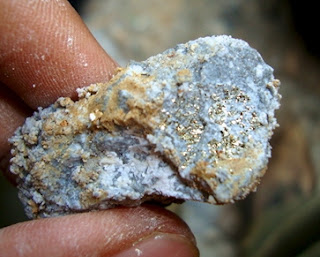Eluvial placers usually represent a transitional stage between a residual placer and a stream placer. Genesis or eluvial gold placer deposits formed by precipitation and reconcentration gold-bearing sediments from the occurrence of primary gold. Where one type merges into another, they cannot be clearly distinguished. They are characteristically found in the form of irregular sheets of surface detritus and soil mantling a hillside below a vein or other source of valuable mineral. It should be noted that the parent vein or lode mayor may not outcrop at the actual ground surface.Placer deposits are generally classified according to their depositional environment. Eluvial placers differ from residual placers in that surface creep slowly moves the gold and weathered detritus down hill, allowing the lighter portions to be removed by rain wash and wind. As the detrital mass gravitates downhill, a rough stratification or concentration of values may develop but this is rarely perfected to the degree found in stream placers.Marine placers occur offshore near the coast; fluvial placers occur in river valleys and in the watershed are analyzed that contain the incidence of primary gold upstream. In conducting searches eluvial gold vein that we need to do is find a location mountainous areas or hilly areas that have a strong granite or crystalline deposits is the good end. Area where geological upheaval has occurred and the pressure is a prime location. The place to look for gold eluvial including creeks and ditches along the sides of hills and in depressions between the hills. Eluvial deposits occur on the hillsides and in the hollows between the hills.Eluvial placers are typically limited in extent but there have been cases such as at Round Mountain, Nevada, (Vanderhurg, 1936, pp. 133·145) where this type of placer supported large-scale mining operations.
Eluvial gold can be found in the low hills, rises and flat-lying areas adjacent to the location above. This is often covered with debris of quartz and iron ore. Eluvial deposits are concentrated in the gradient changes, such as the bottom of the hill.supergene deposits found on low hills or flat-lying areas which have developed laterite profile above bedrock. Supergene gold occurrence is difficult to predict because it is controlled by a complex combination of processes







